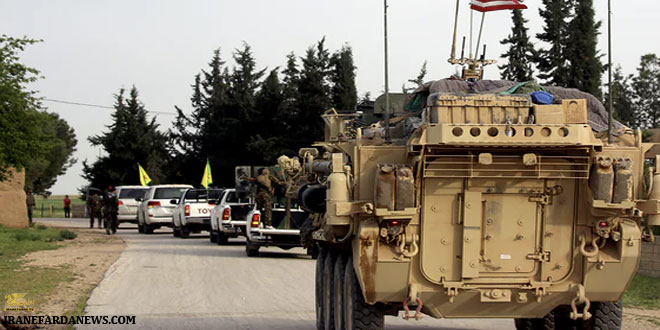
New land corridor to move 140 miles south to avoid buildup of US forces assembled in north-east Syria to fight Isis
Iran has changed the course of a land corridor that it aims to carve to the Mediterranean coast after officials in Iraq and Tehran feared a growing US military presence in north-eastern Syria had made its original path unviable.
The new corridor has been moved 140 miles south to avoid a buildup of US forces that has been assembled to fight Islamic State (Isis). It will now use the Isis-occupied town of Mayadin as a hub in eastern Syria, avoiding the Kurdish north-east, which had earlier been mooted by Iranian leaders as a crucial access route.
The changes have been ordered by Maj Gen Qassem Suleimani, commander of the Quds force, and Haidar al-Ameri, the leader of the Popular Mobilisation Front in Iraq, whose Shia-dominated forces have edged closer to the Iraqi town of Ba’aj, a key link in the planned route and where the Isis leader, Abu Bakr al-Baghdadi, is known to have been based for much of the past three years.

Throughout the war with the terror group, and for several years earlier, Iran has been attempting to carve out areas of influence across Iraq and Syria that it and its proxies control. But as the project has taken shape, the evolving Syrian conflict has added new and unpredictable dimensions that have made securing such a corridor increasingly difficult.
The US buildup in north-eastern Syria has alarmed officials in Baghdad and Tehran. Senior Iraqi sources have told the Guardian that Iranian leaders believe the stepped-up presence aims to deter Tehran’s ambitions.
“In response they are doing all they can to make this corridor happen as quickly as they can,” said a senior Iraqi official. “That means finishing off Ba’aj as quickly as they can, then kicking out Isis from Mayadin and Deir Azzour. They want to do this before the Americans get there.”
Ba’aj has become an especially potent prize as the war against Isis in Iraq enters a final phase. As Iraqi police and military units continue to squeeze Mosul, Shia militias who have been stationed for the past seven months in Tel Afar, northwest of Iraq’s second city, began a push over the weekend that has taken them to within three kilometres of Ba’aj’s outskirts.
Observers said Isis was fighting fiercely to defend the town, which has remained a hotbed of salafi jihadi fighters since the US-led invasion of Iraq 14 years ago. Intelligence officials in the region believe that Baghdadi was in the town for much of March and numerous reports placed him there in February and for much of the battle to retake Mosul.
The fall of Ba’aj would be devastating to Isis’s shrinking presence in Iraq, leaving parts of Anbar province as the its last remaining stronghold in the place where it all began for the terror group more than a decade ago.
As Isis has rapidly lost ground in Iraq, attention has been diverting to the next – and possibly final – phase of the war, the push to take its last strongholds in Syria, which include Raqqa and Deir Azzour. The makeup of the force that will be sent to take both cities has yet to be finalised, with the US continuing to support Syrian Kurdish groups – to the chagrin of its ally Turkey who is robustly pushing for Arab units that it backs to do the job.
The political jostling has made the battlefield in Syria even more complex, forcing Iran to change course on one of its most important long-term goals, just as its progress had seemed assured.
The corridor had been marked out in Syria with minimal disruption, crossing from the Iranian border into Jalawla, in Diyala province, across the south of Mosul to Shawqat, then north to Tel Afar. The pivot to the west, bypassing Sinjar, has now pitched Iranian-backed forces into direct combat with Isis, serving the twofold goal of taking an increased role in the war and laying a cornerstone along the new course.
The plan has been driven by Shia militias under Iranian direction and has empowered minority communities to secure legs along the way. Kurdish PKK fighters, who had travelled from Turkey, had been central to securing a leg from Mt Sinjar to the Syrian border, but the change in course has taken the corridor to the south.
Iraqi officials say that the newly chosen route is from Deir Azzour to Sukhna to Palmyra, then Damascus, and towards the Lebanese border, where the central goal of emboldening Hezbollah could partially be achieved through demographic swaps. From there, a path to Latakia and the Mediterranean Sea has also been envisaged, giving Iran a supply line that avoids the heavily patrolled Persian Gulf waters.
 khalijefars News, Blogs, Art and Community
khalijefars News, Blogs, Art and Community








